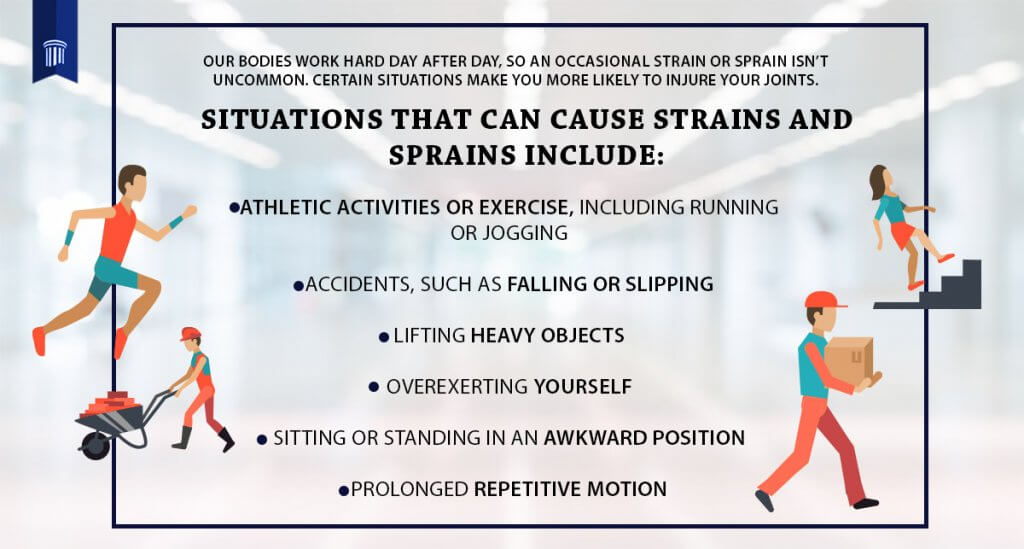Muscle and joint injuries are very common and the pain caused by them can be intolerable. A sprain occurs due to an injured ligament. Strains are injuries to the muscles or tendons. Accidents, falls, or overexertion of muscles can cause sprain and strain.
Appropriate first aid can help reduce pain and prevent the risk of any complications in future. If you know the right first aid techniques for sprains and strains, you can help reduce inflammation, pain, and swelling.
First aid administered at the right time can help restore the normal function of muscles within a short period. If the first aid is not given on time, it may lead to serious complications later.
Here are a few tips on giving effective first aid for sprains and strains!
First Response to the Accident
First, check the injury. If it is not serious, you can give RICE (Rest, ice, compression and elevate) Therapy.
- Calm the victim. Rest the sprained or strained area for two to three days. If the injury is in the arm, foot or leg you can use a sling to immobilize the injured area. You can even give support to an injured finger or toe by tying it to the adjacent finger or toe.
- Apply ice packs over the injured area for twenty minutes once every hour. Gradually reduce to fifteen minutes every four hours. Wrap the ice cubes in a towel or plastic bag and press the ice pack onto the affected part gently. Applying ice cubes directly onto the skin may cause ice burn. Ice pack helps reduce pain and inflammation.
- Compress by covering the joint or limb with an elastic bandage. Ensure that the bandage allows enough air circulation inside. Compression helps to reduce swelling and also gives rest to the joint to promote fast healing.
- Elevate the injured area above the heart level. You can keep the foot of the victim over a chair for ankle and knee sprains. For hand and wrist sprains, you can use a sling to keep the affected area higher than the elbow.
Reducing Pain and Inflammation
You can give over-the-counter pain medications like aspirin, ibuprofen or any other nonsteroidal anti-inflammatory drug. Aspirin should not be given if the victim is under eighteen years. You can apply balms or ointments over the sprained or strained area. Though they do not promote healing, they give a warming sensation which helps mask the pain.

Things to Avoid While Giving First Aid for Sprains and Strains
- You should avoid applying heat packs. Hot baths, heat packs and saunas increase pain and inflammation. You can, however, apply heat packs over the injured area after seventy-two hours.
- Massaging the affected area increases swelling and bleeding. After seventy-two hours, you can give gentle, soothing massage.
Sprains and strains normally do not require medical help. More often, administering proper first aid can help reduce pain, swelling, stiffness, and inflammation. However, if the pain is severe and if you suspect a fracture, it is recommended to seek medical help.
If you know anyone injured at work due to strains and sprains, contact us!
How much is your case worth?
Get a free case evaluation